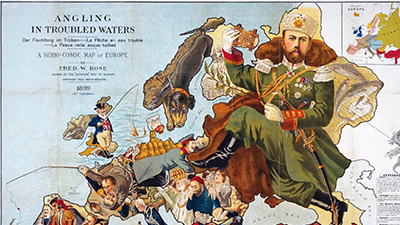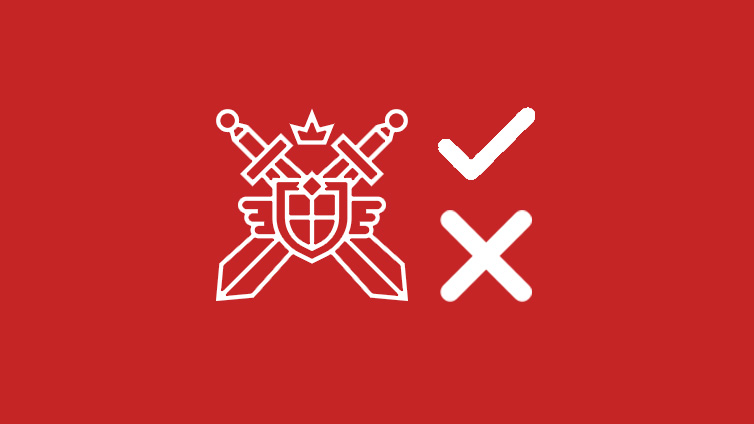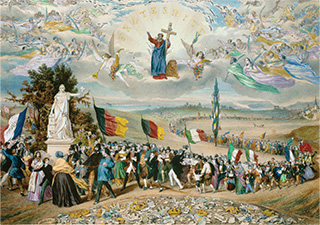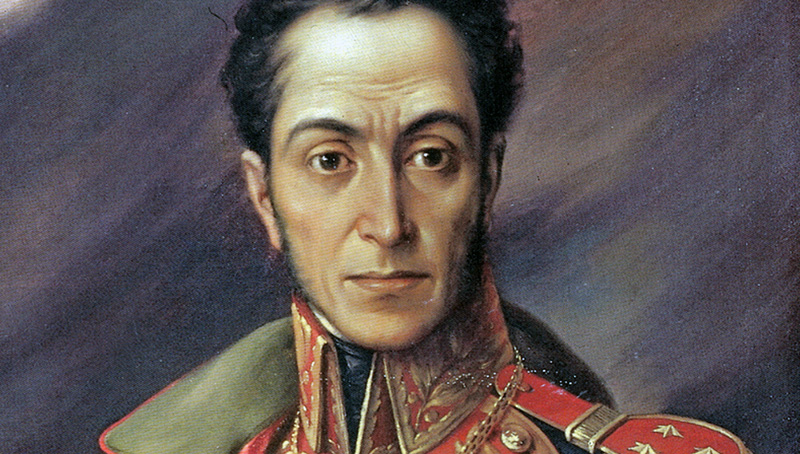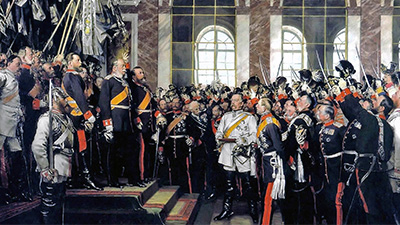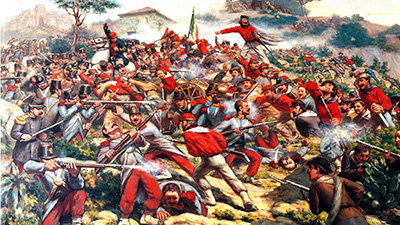Nationalism
Teacher Resources
Driving Question: Why do we live in a world of nation-states?
Trace the roots of nationalism, explore how it spread across regions, and analyze the revolutions it inspired, along with the challenges those movements faced. You’ll learn how people expressed national pride, and how revolutionary hopes sometimes ran into roadblocks.
Learning Objectives:
- Use evidence to understand the origins and effects of nationalism on human communities and political revolutions.
- Evaluate how nationalism affected different societies during this period.
Vocab Terms:
- absolutism
- authority
- ideology
- liberal
- nation
- nationalism
- republic
Opener: Nationalism
To teach this lesson step, refer to page 2 of the Lesson 7.4 Teaching Guide.
Our Community Forum is a great resource for suggestions on prompting students to explore their different identities.
What is nationalism, really? Before exploring how nationalism shaped revolutions and identities, you’ll reflect on what nationalism means to you.
Inventing the Nation
To teach this lesson step, refer to page 3 of the Lesson 7.4 Teaching Guide.
Looking for more support using video in the classroom? Check out the blog post Engaging students with video, or visit the Community Forum to see how other educators approach teaching with video.
Today, we live in a world of nation-states. Ideas of nationalism underpin our personal and community identities. These materials will help you understand what nationalism is and how it emerged.
-
Guiding Questions
-
Before you read
Preview the questions below, and then skim the article. Be sure to look at the section headings and any images.
While you read
Look for answers to these questions:
- What is the definition of nationalism?
- How did the French, Haitian, and American Revolutions help spread nationalism?
- Why was there a decline in religious identity during the long nineteenth century?
- Why was it harder for Germans and Italians to build a unified nation-state than it was for the French?
After you read
Respond to this question: Do you think national identities are the most important types of identities today?
-
Guiding Questions
-
Before you watch
Preview the questions below, and then review the transcript.
While you watch
Look for answers to these questions:
- What is nationalism?
- What did Benedict Anderson mean by “imagined political community”?
- Where did nationalism begin?
- How did nationalism spread to other parts of the world?
- How did nationalism contribute to violence in the twentieth century?
After you watch
Respond to this question: Do you think nationalism has had a mostly positive or mostly negative impact on our world?
What does it mean to belong to a nation? In this video, you’ll learn how nationalism developed, how it spread, and how it has shaped the modern world, for better and for worse.
Key Ideas
Springtime of Nations
To teach this lesson step, refer to page 5 of the Lesson 7.4 Teaching Guide.
Our Reading Guide offers strategies to help readers track and make sense of articles like this one.
The revolutions of 1848 were a flame that spread across Europe—and beyond. In this article, you’ll read about the dozens of countries where revolts erupted, and in the activity that follows, you’ll consider why they failed.
-
Guiding Questions
-
Before you read
Preview the questions below, and then skim the article. Be sure to look at the section headings and any images.
While you read
Look for answers to these questions:
- What caused the revolutions of 1848 in Europe?
- Why did the revolutions of 1848 fail?
- What effects did the Taiping Revolution and the Great Revolt of 1857 have on British power in Asia?
- Why did these revolutions happen around the same time?
- From Europe to China, what was the common effect of the failed world revolutions from 1848 to 1865?
After you read
Respond to this question: What could the revolutionaries discussed in this article have done different to ensure the success of their movements?
Closer: Nationalism
To teach this lesson step, refer to page 7 of the Lesson 7.4 Teaching Guide.
At the beginning of this lesson, you probably knew a little bit about nationalism. How much has that changed? Consider how your understanding of nationalism has changed.
Voices from a Changing World
To teach this lesson step, refer to page 7 of the Lesson 7.4 Teaching Guide.
Real words from the revolutionary era show how people around the world imagined freedom, rights, and national identity. Practice quick sourcing to think critically about who created each document and why.
Forging Nations
To teach this lesson step, refer to page 7 of the Lesson 7.4 Teaching Guide.
Nationalist movements in Germany and Italy transformed fragmented regions into unified states. Compare the strategies behind unification, from revolution to realpolitik, and reflect on whose actions and perspectives shaped the national story.
-
Guiding Questions
-
Before you read
Preview the questions below, and then skim the article. Be sure to look at the section headings and any images.
While you read
Look for answers to these questions:
- How were political communities in Germany organized before 1800?
- What does the story of Snow White reveal about German nationalism?
- What role did violence play in the creation of the German state?
- Why was Bismarck successful in unifying Germany?
After you read
Respond to this question: Do you think nationalism was more a result of the actions of a few great leaders, or more the result of wider historical forces?
-
Guiding Questions
-
Before you read
Preview the questions below, and then skim the article. Be sure to look at the section headings and any images.
While you read
Look for answers to these questions:
- How were political communities in Italy organized before 1800?
- How did Napoleon influence the rise of Italian nationalism?
- Why did the 1848 revolutions fail to unify Italy?
- What helped Count Cavour succeed in unifying Italy in 1861?
After you read
Respond to this question: How might the story of Italian nationalism change if it were told from the perspective of a woman who was a commoner?


